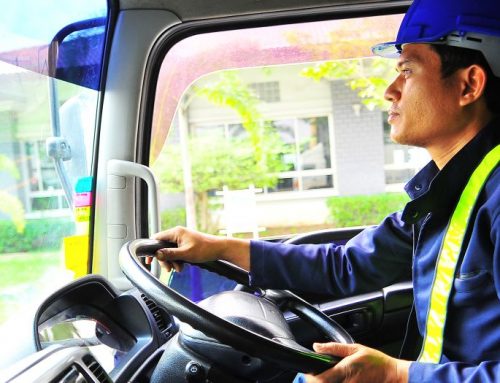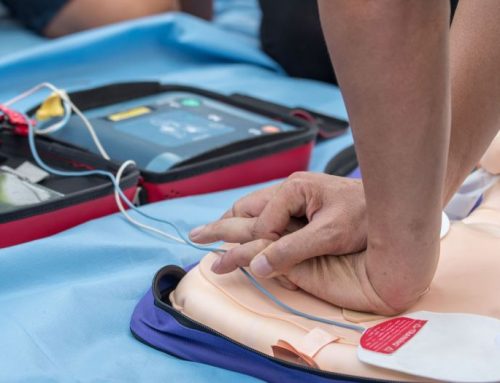If there’s anything that the pandemic has taught us, it’s that life is full of uncertainties. Accidents can happen when we least expect them. Across the UK, many people are constantly exposed to occupational hazards and other risks.
Unfortunately, there is no telling when an injury can happen to us or the people around us. This is where a first aid course comes into the picture. This course equips participants with the knowledge and skills to deliver life-saving assistance whenever and wherever.
Anyone who has completed such a course can respond to various emergencies, even life and death situations. Learn how this course can be useful in everyday situations and minimise critical situations from going bad to worse.
Why is it important?
Such a course is invaluable for both you as an individual and your community. It equips you with life-saving skills that enable you to assist persons who become injured in the event of an accident or emergency situations until medical help arrives. The skills you gain from this course can be applied not only at home but also in public locations and at the workplace.
We have to acknowledge that emergency situations and accidents are not completely unavoidable or preventable. By learning relatively simple techniques and procedures that can be performed with limited equipment and carried out until medical help arrives, anyone can give initial assistance to a victim of injury or illness. Completing this course not only benefits you as an individual but also extends to your family, friends, co-workers, and even the community as a whole. The more people take this course, the safer the community becomes.
Schools and workplaces can be safer if there are trained first aiders who can help in case of emergency situations, whether it be a minor injury or something more serious like a fracture. In the next sections, we’ll look at the reasons why completing a course to be a full-fledged first aider is important.
1. It can save lives
This is the most obvious reason: it can help save lives. Suppose there is an accident in the office or at school. Is anyone trained to come to the rescue?
A complete training gives the staff the confidence and ability to react immediately to an incident, injury, or perhaps even an illness. It has been reported that prompt CPR or cardiopulmonary resuscitation (if necessary) have saved many lives due to the fast implementation of a trained first aider. These cases are reported to have been given during critical and life-threatening accidents, health complications, or injuries in a public place.
2. It can reduce the number of accidents
This generally applies to any workplace. Completing safety training helps employees learn to be more conscious of safety in the workplace. This leads to a reduced number of accidents and injuries.
For most employers, minimising workplace risks and decreasing workplace incidents can benefit everyone. Additionally, doing all this has implications within all aspects of daily operations. If you’re a business owner yourself, you may want all your employees to become more safety-aware to help reduce the number of accidents in the workplace.
3. It promotes a positive work environment
Employers can show their workforce that they care about providing a safe work environment when they make safety training courses available to their employees. Training courses can also be used as an excellent morale booster and team-building activity. Regardless of the nature of the company, employee morale is an integral part of daily operations.
With high morale comes positive attitudes among employees. These positive attitudes then lead to positive results. Employers have to ensure the happiness and wellbeing of their employees to help build a strong relationship with them.
In addition to enhanced wellbeing and morale, safety training courses will ensure employee health and safety. This ultimately results in a better working environment.
4. It can make your company a safer place to work
Large corporations usually provide first aid courses as part of employee training. This is a great option as it guarantees that employees can all look out for one another. In connection to what we have previously mentioned, this particular training makes your company a safer place to work as employees may be able to prevent injuries (if an accident ever happens at work). Providing safety training courses to have qualified first aiders among employees is a thing because employers seek to promote safer practice within their organisation.
5. First-aid kits will be used properly
In a safety training course, not only will employees know exactly what should be in the first-aid kit and how to maintain it properly, but they’ll also learn how to use them effectively in an emergency. Employees will know where to access it quickly.
This saves them time and reduces the impact of the injury or illness. Qualified first aiders are taught what’s in the kits, how to use the contents, and the many ways to use them to react efficiently and effectively in emergencies. This makes each employee a health and safety risk manager (although unofficially).
6. It can reduce recovery time
Prompt reaction to an illness or injury before further aid (such as an ambulance) arrives can save lives. Apart from that, it will also reduce the recovery time of the casualty. If a member of the staff is the casualty, they can get back to work quicker. This has less impact on daily business operations.
7. Employees will have those skills for life
Good training is paramount not just in the workplace. Employees will have those skills for life and can treat themselves, their family, friends, and the public effectively in an emergency, provided that they go through ongoing refresher courses.
8. The cost of a training course is nothing to that of potentially saving a life
The cost of providing CPR and safety awareness training does not cost much. However, it will go a long way to ensuring the ongoing wellbeing, health, and safety of the workforce.
9. It helps meet legal safety requirements
As per the Health and Safety at Work Act in 1974, all workplaces in the UK, including schools, have a legal obligation to ensure that they have adequate health and safety measures. One of the core areas of health and safety is first aid. The corresponding training for staff helping workplaces should meet these health and safety standards set by the Health and Safety Executive (HSE).
Furthermore, the Health and Safety (First Aid) Regulations in 1981 set out specific regulations relating to first aid that employers have to do. These regulations place a responsibility on employers to provide adequate resources to those employees who get injured in the workplace. Schools, on the other hand, are not obliged by the regulations to supply first aid provisions for anyone other than their staff.
However, the Health and Safety Commission (HSC) do advise that schools provide a first aid service to non-employees and include them in their risk assessment as schools have a legal responsibility to those in their care (pupils and visitors alike). As such, when drawing up first aid policies, schools should consider the risk to non-employees and make allowance for them.
Basic First Aid Procedures
Below are common basic procedures that can help get anyone through a minor crisis (until the paramedics arrive). Note, however, that these procedures are not a substitute for proper training. They can still be an introduction to what you can do.
1. Cardiac Arrest
The most important medical procedure of all is CPR or cardiopulmonary resuscitation. If an individual is in cardiac arrest, it means that the heart is no longer pumping blood. This is why CPR should be performed. Using an automated external defibrillator (AED), one could potentially save a life. These AEDs are available in many public areas. They have been simplified for use even if the user has never been trained.
As the procedure has changed in the past few years, it is recommended to take a CPR course at a medical centre, community college, fire department, Red Cross, training organisation, or with the guidance of expert first aiders. Take note that there is no substitute for a hands-on CPR class. Hands-on CPR classes will include familiarisation with AED use.
- Command someone to call for medical assistance.
- Regardless of your training, immediately start chest compressions by compressing hard and fast in the centre of the chest. Allow recoil between compressions. (If and when they arrive, hand the task over to those who are properly trained.)
- Use chest compressions and rescue breathing (if you are trained).
- If available, an AED should be applied and used. Finding one should be commanded to someone else while the first aider is doing chest compressions.
2. Bleeding
Almost all bleeding can be controlled, regardless of the severity. Generally, mild bleeding stops on its own. Severe bleeding, on the other hand, must be controlled as it leads to shock and eventually death.
When faced with bleeding, the following steps are advised:
- Cover the wound with a cloth or gauze.
- To stop the blood flow, apply direct pressure.
- The gauge or cloth will help clots to form and stop the flow, so it should not be removed. If needed, add more layers.
Applying a tourniquet may do more damage than good to the limb. The same thing may be said of elevating and using pressure points.
3. Fractures
As a general rule of thumb, all extremity injuries need to be treated as fractures until an X-ray is obtained. Not being able to walk on a broken leg, fracture, and a break, etc. – there are all kinds of myths surrounding broken bones. Unless you have the X-ray result, treat any injury to the extremity like it’s a broken bone.
- Don’t straighten it.
- Use a splint and padding to keep the limb immobile. This also stabilises it.
- Place a cold pack on the injury. Be careful not to put ice directly on the skin.
- Elevate the injured extremity and give anti-inflammatory drugs.
4. Burns
Stop the burning process: this is the first step to treating a burn. Make sure to clean off chemicals and turn off the electricity. Check if the heat is cooled down with running water. As for sunburn victims, they should go inside to prevent any more burns.
The following steps should be taken to treat a burn:
- For several minutes, flush the burned area with cool running water. (Do not use ice.)
- After washing it off with water, apply a light gauze bandage.
- Do not apply oily remedies and ointments to the burn.
- If necessary, take acetaminophen or ibuprofen for pain relief.
- Do not attempt to break blisters that may have formed.
5. Allergic Reactions
An allergic reaction occurs when the body is hypersensitive to a foreign substance (certain foods, drug ingredients, bee stings, etc.). Anaphylaxis, which can be caused by all of these mentioned allergens, is a life-threatening allergic reaction. This is where an EpiPen or “epinephrine autoinjector” comes in handy.
This EpiPen is a small and ergonomic needle used to inject adrenaline/epinephrine into a person suffering from an allergic reaction.
What Should Be Inside the Kit
The procedures listed above are not very difficult to do. You just have to prepare yourself with the right gear, which includes a first aid kit. The essential kit should include the following items:
- Antibacterial wipes
- Antibiotic ointment
- Antiseptic wipes
- Burn gel
- Cloth/ Gauze pads
- First aid instructions
- Medical gloves
- Medical instrument kit
- Painkillers
- Sling
- Sunscreen
- Tourniquet
Check out the training courses at Inspiration Training
We at Inspiration Training provide comprehensive training courses which will prepare participants for a wide range of situations and equip them with the knowledge and confidence to deal with them quickly and efficiently.
Our offerings include:
- 1 Day Level 3, Emergency First Aid at Work (EFAW)
This is a one-day practical hands-on course with practical assessments. It is ideal for workers who may be working in remote areas and need to give lifesaving assistance to their colleagues. Things covered include CPR, bleeding, dressing wounds, burns and shock, etc.
- 3-hour CPR and AED Course
This course is dedicated to the use of AED. It can be completed as a 1 and a half hour add-on to an EFAW course.
- 1 Day Level 3, Administering Emergency Oxygen
This prepares participants on the importance of oxygen therapy and how it helps with a vast number of issues. This course is ideal for Confined Spaces Rescue teams in the treatment of casualties overcome by gases.
For enquiries, you may reach us via telephone 033377 22224 or mobile 07796 900 935.






